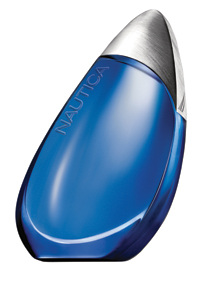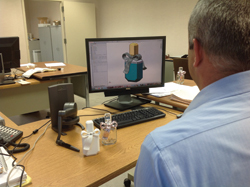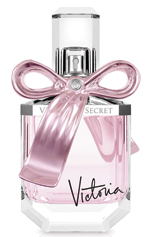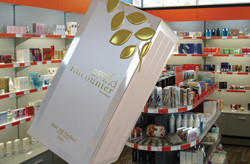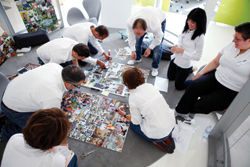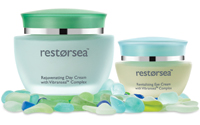
2013-12-24 09:45:13
The Virtues of Virtual Package Design
2013-12-24 09:45:13
|
|
Getting a product to market quickly can increase its odds for success, especially in the ultra-competitive fragrance, cosmetic and personal care industry. There are a number of different pre-production services and technologies capable of rendering virtual samples of what a finished product will eventually look like. Sophisticated technologies like 3D printing, advanced imaging and other mediums are becoming an increasingly cost- and time-efficient way to help everyone associated with package development tweak and root out packaging glitches long before the product ever gets to market.
Alex Richnak, packaging conception development manager for Coty Inc., says his company uses two primary rapid prototyping technologies during fragrance and cosmetic development: Fused Deposition Modeling (FDM) and Granular Material Binding (GMB). “These technologies use similar methods to create solid models; building layer on top of layer,” he explains. “FDM uses extruded plastic to form each layer, whereas GMB prints adhesive over a layer of particles.
“These technologies help reduce tooling costs because we are able to see and adjust designs before we begin production on expensive tooling,” he continues. “Also the prototyping expedites problem solving, reduces manufacturing risks and alleviates aesthetic concerns of the packaging.”
For instance, Richnak says that during the development of the bottle for Coty’s Nautica Aqua Rush eau de toilette, there were manufacturing, functional and aesthetical concerns related to the angled sail-shaped glass bottle.” I was able to create prototypes with an accurate weight and distribution to optimize the angle of the bottle while reducing the risk of breakage caused by instability,” he says. “I also created a prototype of a carrier puck, which is used in manufacturing to hold the glass bottle during the filling operation. The puck successfully stabilized and oriented the angled glass bottle, vertically, for consistent and accurate filling.”
|
|
Rapid prototyping is a key competency for Freeport, NY-based Lombardi Design & Manufacturing. Their design engineers create high resolution 3D images. Images are transformed into finite cross sections that are consecutively “grown on top of” prior cross sections to produce a dimensionally accurate representation of the packaging they produce like compacts, closures and fragrance caps.
The prototypes allow developers to touch and feel what the final part will be like, often eliminating the need for pre-production unit tooling, says Jack Albanese, the company’s director of new business development. “Our prototypes are aids to not only present an object as it truly is, but also how it will be manufactured,” he comments.
Albanese points out that the prototypes are more than just abstract objects; they’re “manufacturable,” real-world, engineered solutions. “We are not only showing package developers a flat image on paper, but rather a literal way to grasp the object, determining how it best functions and interacts with other aspects of the product like a particular pump for a fragrance cap or a pan for a compact,” he says. “Developers quickly see opportunities to enhance the design to make it work better in aesthetic or functional terms, which has implications for cost-savings too.”
|
|
This was the case for the metallized bow component that’s featured on the new Victoria fragrance from Victoria’s Secret, which Lombardi developed using specialized computer-aided design software and hardware prior to manufacturing. “Our design engineers sculpted the free flowing bow with an electronic stylus to make the bow appear as natural as any fabric would be—except our part is a rigid, injection molded, piece of art,” Albanese says.
Cosmetic and personal care collectively represent the largest engagement category for Chicago, IL-based Berlin Packaging. Scott Jost, Berlin’s vice president of innovation and design, says the company illustrates concepts using a combination of 2D and 3D tools. The process begins with a sketch of the package on a 27-in. graphic tablet. The sketch is then used as an underlay to inform development of a basic 3D CADD model. “With the new 3D model as a ‘buck’ we can rotate, scale and move the virtual part to create underlays that we then use as ‘virtual tracing paper’ for detailing,” he explains. “It’s a very efficient way of iterating that advancements in hardware and software have only recently made truly practical.
“We can put live 3D models on our client media wall, making real-time changes to color, proportion and even swapping our brand graphics on the fly, allowing a client to review and choose from among dozens of options that might represent $50,000 in ‘real’ physical prototypes,” he continues. “When it is time for a physical prototype, our designers can send parts from their desktop to any of several prototyping machines in the studio with the ease of printing a Word document.”
A client recently enlisted Berlin’s help to develop visual branding for a super-premium line of hair styling products, hoping to break the pricing ceiling in the category. “[They] had a great formula, but their past experiences led them to believe that there was no way to develop custom components in time for their aggressive launch target,” Jost says.
Working in tandem with the company’s marketing and operations groups, Berlin used Solidworks, ProENGINEER ISDX, Showcase and Modo platforms to quickly arrive at a brand architecture and custom structure that the brand owner loved. “To sew up the details, we spent a full day with their brand lead, starting with a presentation of prototypes that had printed the night before, followed by hammering out the details of color, translucency level, surface finish via a virtual model projected in our media room,” says Jost. “Because the client was able to make decisions in real time on a visualization that updated instantaneously to their feedback, we nailed details that used to take weeks and tens of thousands of dollars all in one day.”
As with any package development process, there were challenges to overcome. “At one point there was an impasse within the client’s branding group regarding the new bottle’s surface finish,” recalls Jost. “Some felt that soft touch would be appropriate, others wanted a high-gloss surface. The tie-breaker was seeing the package in a simulated store setting with 72-in. fluorescent lights.”
When viewed in high gloss, the package’s shelf placement combined with the lights to produce distracting reflections that washed out the subtle deco details–an effect that was compounded with motion. “The process of setting up and simulating the target account’s planogram using full appearance prototypes would have taken over a week and come at a great cost, all of which was avoided using the technologies available to us,” he says.
Virtual Reality, Actual Cost Savings
|
|
Miamisburg, OH-based Esko Americas offers specific solutions under its Esko Studio 3D packaging design toolset, which allows packaging artwork professionals to quickly render a virtual, accurate and technically correct package mock-up. The toolset is also used as an internal QA tool for complicated packaging to check for panel misalignments or structural mistakes.
For complicated packaging shapes, ArtiosCAD has dedicated tools specifically designed for packaging structural design, product development, virtual prototyping and manufacturing.
Esko Visualizer shows ultra-realistic 3D packaging visualizations with a wide range of substrates, printing and finishing effects in real-time. “Visualizer simulates the printing and finishing operations in the correct order, and on the right substrate, even for complicated luxury packaging,” comments Heidi Larsen, brand owner program vice president for Esko Americas. “What is seen doesn’t just look great; it’s also technically feasible.”
Finally, the Esko Studio Store Visualizer allows designers to view and interact with packaging in a virtual retail environment. In addition to previewing the visual impact of their product, brand owners can also glimpse what their package will look like on-shelf next to its competitors. “The details are very realistic: the shadows at the back of the shelves; the randomness of the products’ position on the shelf; the way materials and print effects are rendered,” says Larsen. “Animation offers freedom, and the life-like physics add even more realism.”
Larsen says that the Studio suite can revolutionize the way brand owners handle packaging and point of sale development and shorten the artwork approval cycle using interactive 3D visuals, while saving money typically spent on mock-up and studio photography. “There is no more need to cut, fold and glue printouts all the time because the 3D packaging model can be seen on the screen,” she explains. “Designers can work faster and more creatively, because it is easier to create many design variations for review.
“They can check for mistakes before making printing plates, embossing dies or varnish blankets. They can also avoid rejects by showing clients up-front an accurate virtual mock-up,” she continues. “And the packaging artwork that is delivered is technically more correct, so that the design is not compromised during production.”
Interbrand, one of the world’s largest brand consultancies with clients like Sephora and Procter & Gamble, is an Esko client that has utilized and personalized the company’s Esko Studio and Visualizer tools for use with their own clients. “Interbrand is always digitally thinking forward, and Studio and Visualizer are great examples of how digital work is evolving 2D into 3D,” says Jack Hinkel, Interbrand’s executive director of implementation. “For both the agency and brand team, picturing a package design in-store requires more than imagination.
It requires a three-dimensional view of how a product folds, rotates and billboards on the shelf. Fortunately, this next-dimension of package design arms stakeholders with lifelike simulations that inspire quick, confident decision-making and leaves nothing–we mean nothing–to the imagination.”
Hinkel says the time and cost savings make the process completely worthwhile. “Clients like the idea of streamlining the process without a physical comp; we can share packaging designs with their upper management without the time and cost of multiple comps,” he adds. “If you can make the decision early on–for example, no embossing–the entire production schedule changes because the supplier is not ordering an embossing plate.”
Technology continues to drive the evolution of how quickly and efficiently package comps can be produced. “3D printing for rapid prototyping of our designs and our clients’ concepts has advanced to the point where we can produce complicated multi-component packages in a few days,” says Norman Kay, CEO, IBC Shell Packaging, Lake Success, NY. “CAD files are initially prepared and then converted into STL files that produce our 3D prototypes. Both functional and aesthetic qualities can now be analyzed and approved in a fraction of previous process time.”
Kay says IBC Shell utilizes Baseline 300 DPI Illustrator and Photoshop CMYK files to input into Mimaki, Epson and Roland sheet fed digital presses, which provide their clients with high-resolution, color-matched package facsimiles in about 48 hours. “The traditional pre-production format and the approval chain process have been cumbersome steps in the package development cycle,” he explains, pointing to how the technological benefits impact the entire launch program. “Package design and pre-production have now evolved to accommodate the speed to market pressure for new product launches. Fragrance, cosmetic and personal care marketers can now explore multiple substrate, color, texture, print, and custom finish explorations and iterations concurrently. Aesthetics, function, production feasibility, lead times and cost considerations can be assessed within one 360 degree approval process.”
|
|
Clariant ColorWorks, Charlotte, NC, provides a wide range of resources and equipment to help beauty packaging developers bring color into the early stages of a project and speed new products to market, including ColorForward, a color and trend direction guide; Wall of Color, an ever-growing library of color samples presented in the thermoplastic polymers; global color database, which logs tens of thousands of color developments made by Clariant around the world; ColorViz for on screen color matching; and 3D software for pro typing and on-screen color.
Once a client narrows down a preferred range of options, the company’s ColorWorks staff creates mood boards to assemble different facets of a product or package—typography, imagery, headlines, textures and other sensory and environmental elements, along with a color palette.
ColorWorks’ lab—and production-scale plastics-processing equipment—is then capable of making sample parts for color evaluation. “We have the equipment to simulate six to eight color trials in one day for extrusion blow molding, a process that could take three to five days using production equipment,” says Peter Prusak, head of marketing, Clariant Masterbatches North America. “For stretch-blow-molding and injection molding, we can do ten color trials or more in one day. These are capabilities that few companies can match and the speed-to-market and cost savings are tremendous.”
Prusak recalls a recent project centered on the development of a colored PET bottle for a personal care product. “The customer had worked with another supplier that had produced only color chips for evaluation and the company marketers and designers approved the color based on the chips,” he said. “As the launch deadline neared, samples were produced and it became obvious that the bottles could not be blown correctly due to the processing characteristics of the pigments chosen. (Lipstick tubes)
Clariant ColorWorks North America (West Chicago, IL) was enlisted to help. “Clariant’s color experts recognized the problem immediately and recommended a different pigment formulation that was tested using a two-stage stretch blow-molding machine in the ColorWorks processing lab,” he says. “Sample bottles were successfully produced and the product launched on time.Clariant was also able to recommend additional additives that protected product ingredients from UV light. Without them, the package contents might have been damaged by the UV light and the product might have needed to be recalled.
Rapid package protyping and comping has become an essential tool at a time when fragrance, beauty and personal care products must be developed and launched with increasingly short lead times. “This means decisions must be made quickly and the consequences of an error or a poor choice can be dire,” concludes Prusak. “It is imperative that good information is available at every stage of development so that twelfth-hour errors can be avoided.” (Compact case)
|
When Tech Doesn’t Fit the Bill: Prototyping by Hand
Sometimes even the most advanced rendering technologies can’t compare to putting a package together by hand. New York-based Color By Number, which specializes in making prototypes for the fragrance and cosmetics industry, recently had to do just that when it was commissioned to create comps for the Restorsea range of facial care products. The client requested actual three-dimensional pieces that could then be sent to the cap and jar vendors. |
LinkedIn
